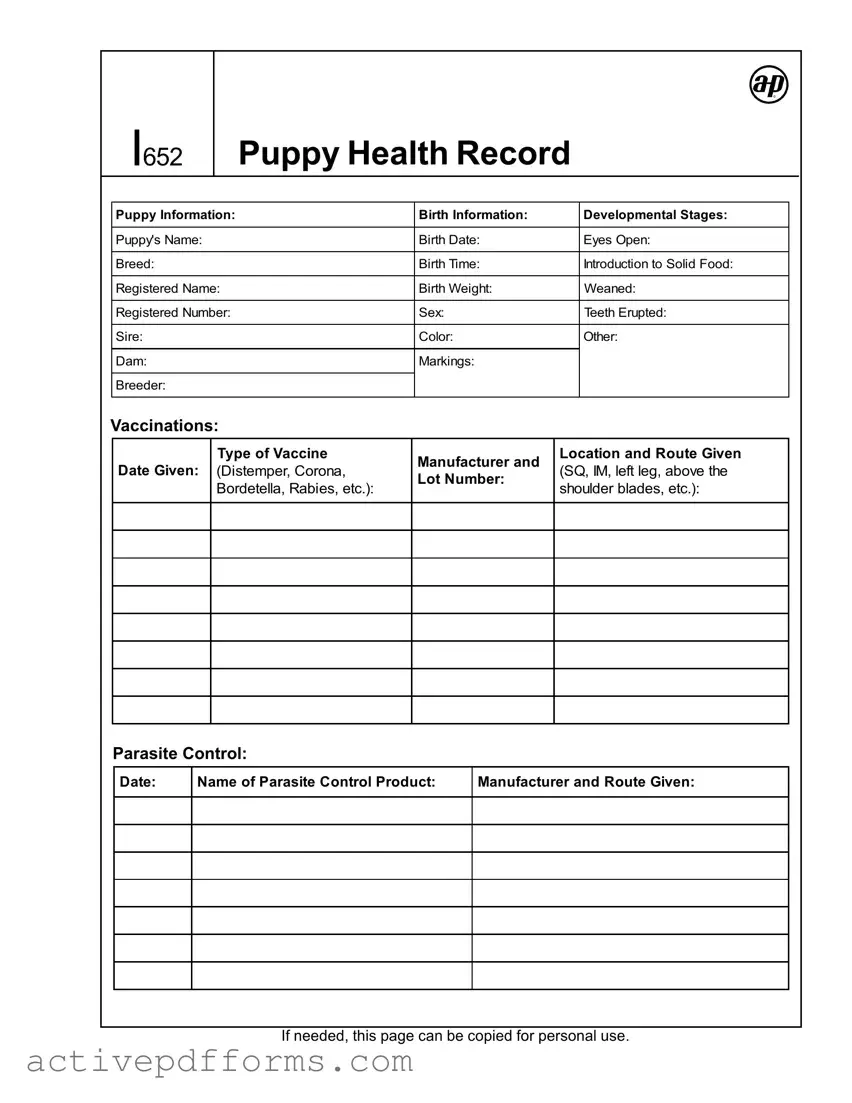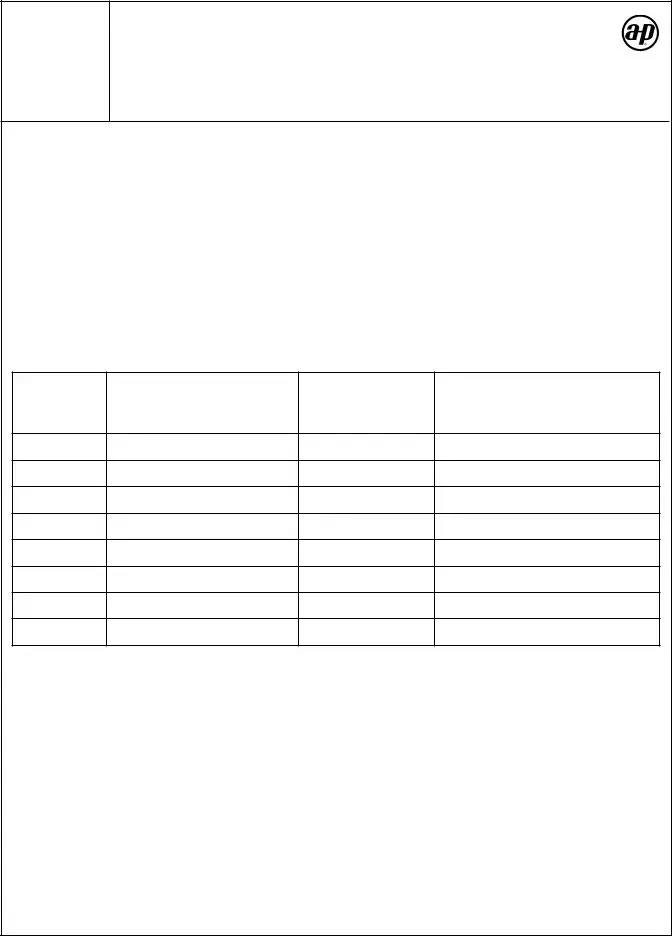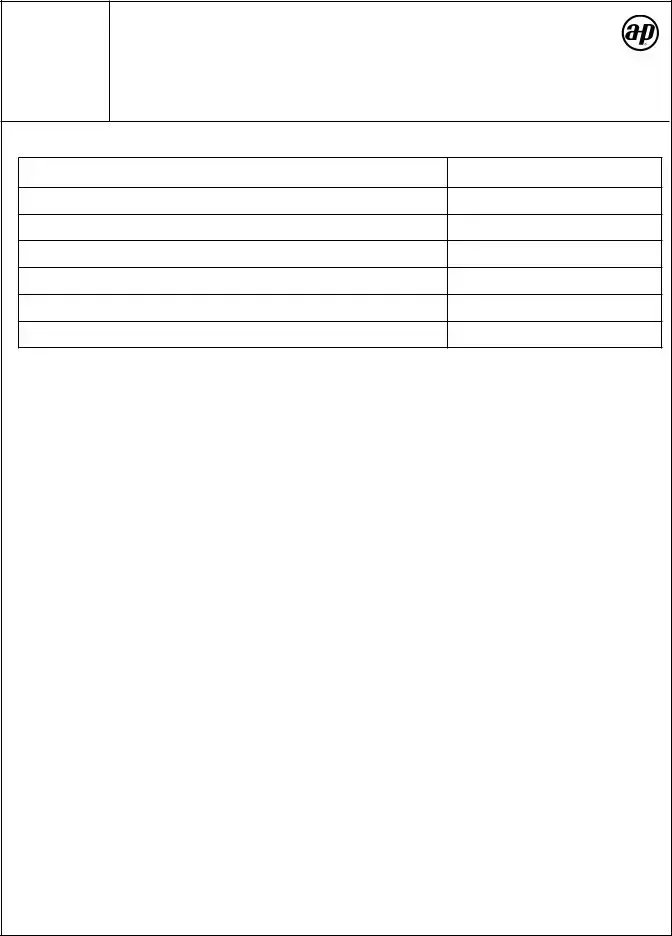The Puppy Health Record form serves as a vital tool for both new and experienced dog owners, providing a comprehensive overview of a puppy's health history from birth. Detailing important milestones and health interventions, the form includes sections on the puppy's basic information, such as name, breed, birth details, and registration, if applicable. It covers developmental stages like when the puppy's eyes open, introduction to solid food, weaning, and teeth eruption. Vaccination records are a crucial part, listing dates, types of vaccines administered, manufacturer information, and the specifics on how and where they were given. The form also outlines parasite control measures, including the dates when treatments were administered and the products used. Additionally, it provides space for documenting examinations or procedures the puppy has undergone, with findings and comments by the owner or veterinarian. To guide owners through the puppy's early development, a schedule of important events from birth to the spay or neuter procedure is included. This schedule helps ensure that the puppy receives timely care, such as dewclaw removal, de-worming, vaccinations, and introduces the owner to the necessary steps for beginning heartworm medication. A remarkable feature of this form is its ability to be copied for personal use, making it a valuable and reusable resource for tracking the well-being and development of one's puppy, ensuring they receive the best care possible during these formative months.


